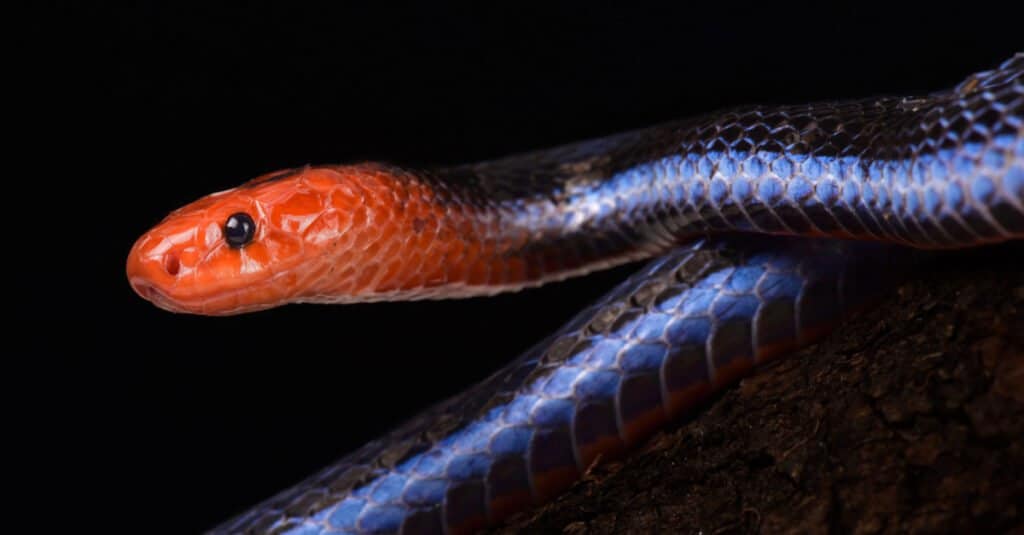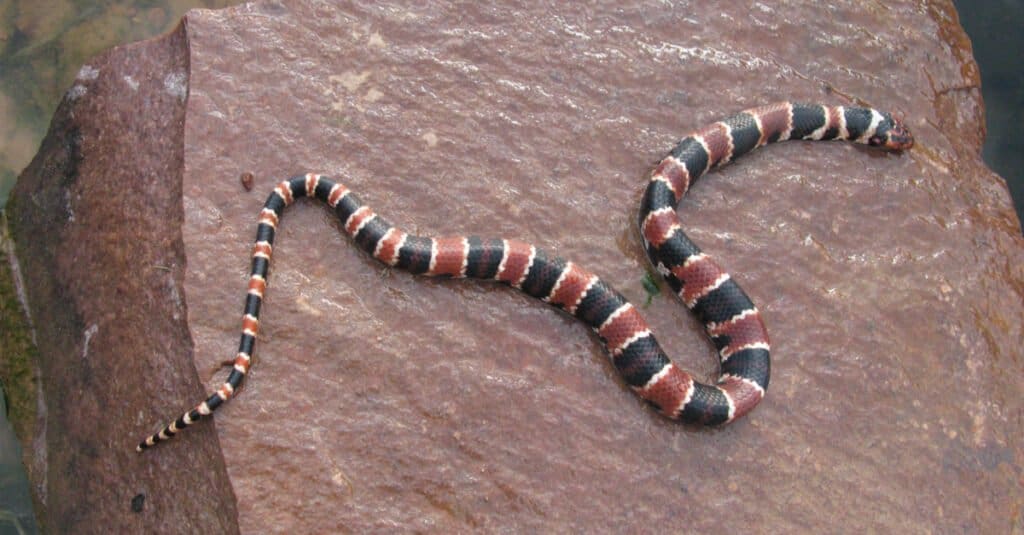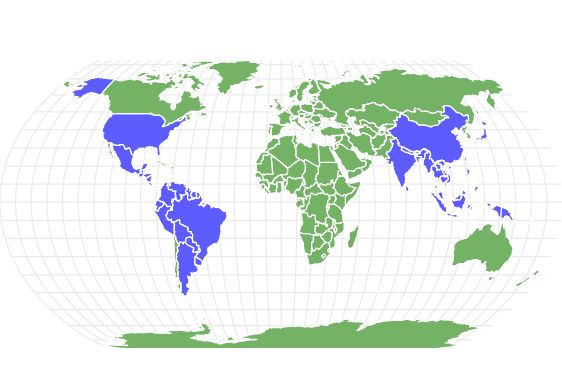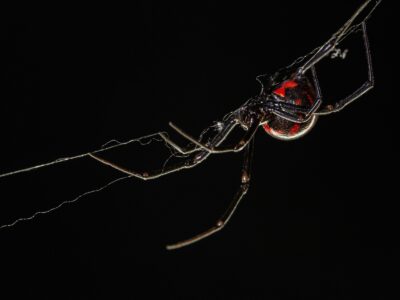Coral Snake
.jumbotron {
background-image: url(“https://a-z-animals.com/media/2022/02/micrurus-eastern-coral-snake-shutterstock_617480465-400×300.jpg”);
}
}
@media only screen and (min-width: 641px) and (max-width: 920px) {
.jumbotron {
background-image: url(“https://a-z-animals.com/media/2022/02/micrurus-eastern-coral-snake-shutterstock_617480465-470×370.jpg”);
}
}
@media only screen and (min-width: 921px) {
.jumbotron {
background-image: url(“https://a-z-animals.com/media/2022/02/micrurus-eastern-coral-snake-shutterstock_617480465.jpg”);
}
}
Coral Snake
Various
There are over 80 species of coral snake worldwide.
Coral Snake Scientific Classification
- Kingdom
- Animalia
- Phylum
- Chordata
- Class
- Reptilia
- Order
- Squamata
- Family
- Elapidae
- Genus
- Various
- Scientific Name
- Various
Read our Complete Guide to Classification of Animals.
Coral Snake Conservation Status
Coral Snake Facts
- Prey
- Mainly other snakes, but also small mammals.
- Name Of Young
- Hatchling
- Group Behavior
-
- Solitary
- Fun Fact
- There are over 80 species of coral snake worldwide.
- Biggest Threat
- Human encroachment
- Litter Size
- 2-7
- Habitat
- Forests, jungles, some aquatic
- Diet
- Carnivore
- Lifestyle
-
- Nocturnal
- Common Name
- coral snake
- Number Of Species
- 78
This post may contain affiliate links to our partners like Chewy, Amazon, and others. Purchasing through these helps us further the A-Z Animals mission to educate about the world’s species..

Discover alligator-eating snakes, spiders larger than your phone, and 1000 more incredible animals in our daily FREE email.
.photo-gallery {
–margin: 0px auto 0px;
–padding: 0px 0px 0px 0px;
}
.gallery-link {
background-image: url(“https://a-z-animals.com/media/2022/02/Micrurus-red-tail-coral-snake-shutterstock_106591016-1024×535.jpg”);
background-repeat: no-repeat;
background-size: cover;
background-position: center;
height: 500px;
justify-content: center;
text-align: center;
align-items: center;
display: flex;
border: 2px solid #000;
}
.gallery-link img {
height: 50%;
}
@media only screen and (max-width: 768px) {
.gallery-link {
height: 300px !important;
}
}
View all of the Coral Snake images!
“Red touches yellow, kill a fellow…” isn’t always accurate.
Coral snakes are highly venomous members of the Elapidae family. They’re split into Old World and New World groups, most of which inhabit sparsely populated areas. They’re generally small snakes, between 2 and 4 feet; the Arizona coral snake is sometimes thinner than a pencil.
The Old World groups live in Asia, India, and the islands of Southeast Asia. These snakes are classified into three genera with about 20 species. They exhibit the widest variation in color patterns, from mostly blackish-blue with orange on their head and tail.
button.pulse {
transform: scale(1); animation: pulse 2s infinite;
box-shadow: 0 0 0 0 rgba(11, 247, 25, 1);
}
@keyframes pulse {
0% { transform: scale(0.90); box-shadow: 0 0 0 0 rgba(11, 247, 25, 0.5); }
60% { transform: scale(1); box-shadow: 0 0 0 15px rgba(11, 247, 25, 0); }
100% { transform: scale(0.90); box-shadow: 0 0 0 0 rgba(11, 247, 25, 0); }
}
The New World coral snakes live in the Americas, in the southern United States, throughout Central and South America. Many of them have red, yellow, and black patterns but not all. Of all the coral snake species, the Americas are home to by far the largest variety. There are dozens of species, approaching 80; however, with all that variety they are only classified into two genera.
Amazing Facts About Coral Snakes
- Coral snakes are highly venomous, second behind black mambas, but their venom delivery system is lacking; their fangs are small and weak, and not hollow like a pit viper’s fangs.
- In North America, they’re the only venomous snakes to lay eggs. The others are all pit vipers that give birth.
- Many coral snakes spend their time buried in leaf litter or otherwise hiding; they wait for their prey to come to them.
- A few species are aquatic; their tails are flattened and act as a paddle.
Where to Find Coral Snakes
Coral snakes inhabit the Americas, like in Alabama, and many areas of India, Asia, and the islands of Southeast Asia. These snakes vary widely in behavior, but are mostly fossorial, digging into leaf litter and hiding in abandoned burrows. Many do not come out except to breed or during the rainy season. A few are mostly aquatic and spend most of their time in the water with dense vegetation.
They mainly eat rodents, but will also eat salamanders, frogs, lizards, birds, and occasionally other snakes. Some species, like the blue Malaysian coral snake, eats primarily snakes.
Coral Snake’s Scientific Name
They’re part of the Elapidae family, cousins to snakes like cobras and mambas. Coral snakes are classified under several genera, all with different meanings:
- Calliophis is Greek and means beautiful (calli = beautiful) snake (ophis).
- Hemibungarus
- Sinomicrurus means Chinese (sino = from China) small (micr = small) tail (urus = tail).
- Micrurus means small tail.
- Micruoides means small tail-like.
Each of the specific names either gives further detail about the snake’s physical description or honors a person involved in its discovery.
Types of Coral Snakes
Old World Family
Calliophis
Most of the Calliophis species inhabit areas from India east to the Philippines.
These include Beddome’s (C. beddomei), Bibron’s (C. bibroni), Castoe’s (C. castoe), and the black coral snakes (C. nigrescens), which are endemic to India; the Indian coral snake (C. melanurus), which also occurs in Bangladesh and Sri Lanka; Sri Lanka is also home to the blood-bellied coral snake (C. haematoetron). The Dinagat Island banded coralsnake (C. salitan), inhabits the Philippines. Malaysian banded (C. intestinalis), spotted (C. gracilis), and speckled coral snakes (C. maculiceps) are scattered around Cambodia, Indonesia, Laos, Malaysia, Myanmar, Singapore, Thailand, and Vietnam.
Hemibungarus
Both members of this genus inhabit the Philippines: The barred coral snake (H. calligaster) and H. gemianulis.
Sinomicrurus
Of the 5 Sinomicrurus species, two are endemic to Taiwan – S. hatori and S. sauteri. The Japanese coral snake (S. japonicus) only occurs on the Ryukyu Islands; Kellogg’s coral snake (S. kelloggi) lives in Laos, Vietnam, and China; McClelland’s coral snake (S. macclellandi) is more widespread; it inhabits areas in China, India, Myanmar, Nepal, Ryukyu Islands, Thailand, Taiwan, and Vietnam.
New World Family
The United States only has a few species. The eastern coral snake (Micrurus fulvius) ranges from North Carolina to Florida, and west to Texas. It’s the brightest-colored of all the North American coral snakes and is small. They only reach about 2 feet long.
The Arizona or western coral snake (Micruroides euryxanthus) has several subspecies and inhabits North America from Arizona to Sinaloa, Mexico.
Texas is home to its own coral snake, the Texas coral snake (Micrurus tener), it has a few subspecies also, and lives in northern Mexico, Texas, Louisiana, and Arkansas.
Micrurus
The Micrurus genus holds most of the world’s coral snake species – there are approximately 80 species in this extensive list. They occur in the Americas in the southern United States, Central America, and South America. Many species have more than one subspecies.
The red-tailed coral snake (M. mipartitus) is one South American snake that has white bands and a striking red color on its head and tail; it inhabits Panama, Colombia, Ecuador, and Venezuela.
Coral Snakes: Population and Conservation
Coral snakes don’t breed very quickly – many only lay 2 or 3 eggs at a time. Some coral snakes are considered endangered in part of their habitat; for example, North Carolina considers the eastern coral snake (M. fulvius) endangered. The IUCN Redlist has several listed as vulnerable with decreasing populations; including the Roatan coral snake (M. ruatanus), the Oaxacan coral snake (M. ephippifer), and the Japanese coral snake (S. japonicus).
Identifying Coral Snakes: Appearance & Description
The rhyme many school kids learned works most of the time for the eastern and Texas coral snakes; it sort of works with the Arizona species which often has white bands instead of yellow. It’s not completely reliable, however, and the further you go from the United States, the less it works. Add to that, several snake species mimic coral snake colors, such as the king snakes and milk snakes that have similar banding.
So, learning to identify the coral snakes that live in your area is the best way to go.
Snakes such as the eastern, Texas, and Arizona coral snakes do have a couple of things in common: They have blunt heads and tails, and their color pattern extends all the way around their bodies. The non-venomous look-alikes’ color stops at their bellies.
The rhyme doesn’t work at all with Asian species; their colors and patterns vary greatly from species to species.
Coral Snake Diet
Read about what coral snakes eat.
Coral Snakes Pictures and Videos

reptiles4all/Shutterstock.com

vampflack/Shutterstock.com

Jay Ondreicka/Shutterstock.com

Dr. Morley Read/Shutterstock.com

guentermanaus/Shutterstock.com
Venom: How Dangerous are Coral Snakes
Despite their highly toxic venom and fearsome reputation, North American coral snakes are considered less dangerous than rattlesnakes and copperheads. Their venom is the second most toxic in the world after black mambas and is composed of neurotoxins that attack the respiratory system. A severe bite can cause death in just a few hours, which makes immediate medical care vital.
Toxicity of their venom aside, these snakes have a poor venom delivery system. Unlike vipers, coral snakes don’t have hollow fangs attached to a venom gland. Their fangs have a groove that the venom travels down when they bite; rather than striking and releasing, coral snakes have to chew on their prey to get venom injected.
Coral Snake Behavior and Humans
Coral snakes are highly venomous, but surprisingly few bites occur every year. Unlike the mambas and cobras, their less reclusive cousins, they are excellent escape-artists and often leave before you ever have a chance to see them. If you do see one, your best bet is to back away and give it space to leave; they’re not generally aggressive and will not chase you.
They’re reclusive and spend much of their time buried in leaf litter, underground, or otherwise hidden on the rainforest floor. Over 90% of the bites incurred happen after someone picks up one of these snakes.
As with other dangerous animals, only those with proper training and experience should handle them.
View all 157 animals that start with C
Coral Snake FAQs (Frequently Asked Questions)
Are coral snakes venomous?
Yes! Like all members of the Elapidae family, which includes cobras and mambas, coral snakes are highly venomous.
How do coral snakes hunt?
There’s a lot that isn’t known. We know that many coral snake species love to eat other snakes (including their own), and when they strike, they hold on so that snake they’re trying to eat can’t get away.
Are coral snakes aggressive?
These snakes aren’t aggressive, they spend most of their time underground and generally avoid people.
Where do coral snakes live?
Most species are in the Americas, but Asia has 3 genera.
What do coral snakes eat?
It depends. Most eat mice, rats, and birds; some specialize in eating others snakes, and the aquatic species eat fish.
Is a coral snake more venomous than a cottonmout?
A coral snake is more venomous than a cottonmouth snake.
What is the difference between a copperhead and a coral snake?
The main differences between a coral snake and a copperhead lie in their size, taxonomy, venom yield, fang type, and diet among others.
What are the differences between a coral snake and a corn snake?
The key difference between the coral snake and corn snake is that the coral snake is venomous, while the corn snake is not.
Read the other differences here!
Sources
- Reptile Database, Available here: https://reptile-database.reptarium.cz/
- Amphibians & Reptiles of NC, Available here: http://herpsofnc.org/eastern-coral-snake/
- IUCN Redlist, Available here: https://www.iucnredlist.org/species/177491/96877688
- North Carolina Wildlife, Available here: https://www.ncwildlife.org/Learning/Species/Reptiles/Eastern-Coral-Snake
- National Institute of Health, Available here: https://pubmed.ncbi.nlm.nih.gov/19673084/
















